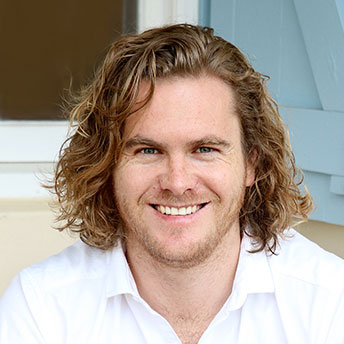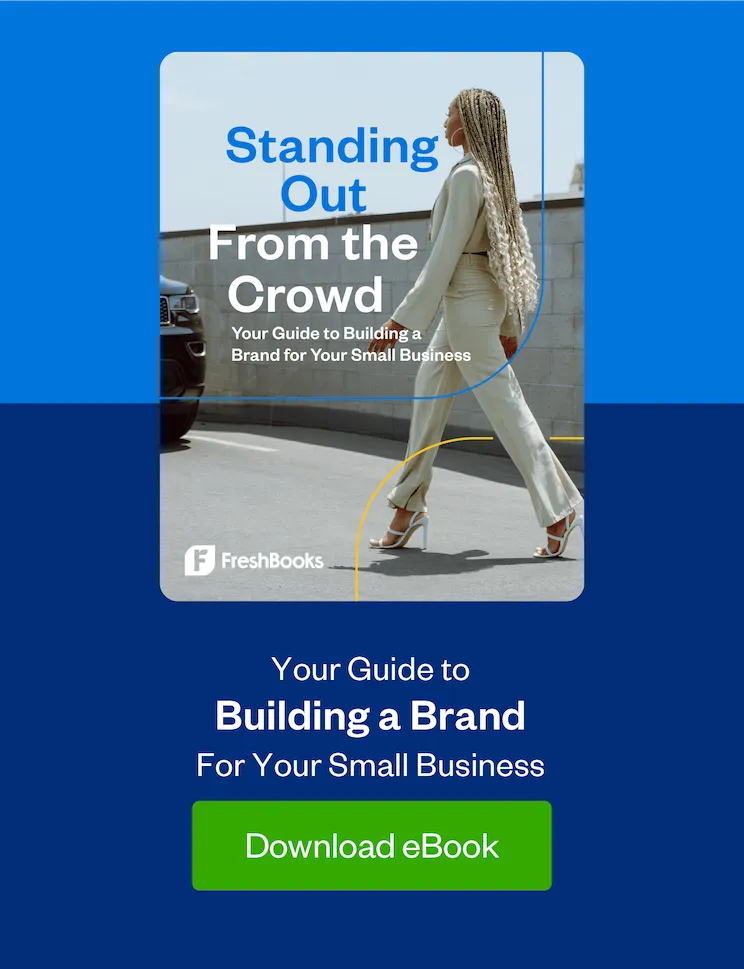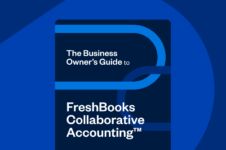Everything you need to know about how to write a business proposal that wins more business.

Learn almost everything you need to know about how to write a business proposal that converts.
Imagine this scenario: Your dream client contacts you and asks you to write a business proposal. You’re ecstatic because you now have an opportunity to pitch for the business.
But you’re also worried about the possibility of rejection. Although you understand that factors out of your control may have led to rejection—maybe the prospect didn’t have the budget—you want to ensure you submit a strong proposal.
The good news is you can learn how to write a business proposal to avoid future rejections. We’ll go through:
- What a business proposal is
- Why proposals matter
- The 5-step process across 3 phases that will help you write a business proposal
- Part 1: Preparation
- Step 1: Research and Collect Information
- Part 2: Writing
- Step 2: Follow a Business Proposal Outline
- Step 3: Use Persuasive Language
- Step 4: Employ Persuasive Pricing
- Part 3: Packaging
- Step 5: Review and Edit Your Proposal
- Part 1: Preparation
Ready? Let’s get started.
Table of Contents
What Is a Business Proposal?
There is a lot of confusion around what a business proposal is, with some mistakenly confusing it with a business plan and others using it interchangeably when talking about a quote, bid, or estimate.
So before you learn how to write a business proposal, let’s put the confusion to bed by reviewing these documents, starting with an estimate.
Estimates and When to Use Them
An estimate is a trimmed version of a proposal, which provides an overview of cost, timelines, key deliverables, and services. You’ll create one before starting smaller projects with existing clients or when prospects contact you asking for an idea of what your services cost.
An estimate ensures that you don’t overwhelm existing clients with too much detail and shoot yourself in the foot by excluding information that’s critical to project success.
Quotes and When to Use Them
When quoting, you provide a fixed price for delivering a particular service. The price is usually only valid for a specific number of days to protect you from cost fluctuations. Builders, for example, know that material costs can vary daily and therefore limit the validity of the quote to “X” days.
Bids and When to Use Them
Bids are common when the scope of work is clear, especially in the construction industry. For example, a contractor may send a bid in response to a government agency looking for service providers for a particular project. The agency will usually make all of the project details available to the public.
While a bid is more detailed than a quote or estimate, it’s not as comprehensive as a proposal.
Business Plans and When to Use Them
Before opening a business, aspiring owners will sometimes create a business plan. This plan is a formal business document that explains the business idea, details financial goals and objectives, provides comprehensive financials, and specifies strategies to achieve these goals.
The business plan provides a roadmap for business success and is often used to get funding from investors and banks who usually look at the financials, core concept, and the business vision to determine whether it can provide an adequate return. Often a business plan is required when securing financing, like business loans.
Business Proposals and When to Use Them
Business proposals, however, are sales documents used to win a new prospect’s business. These documents contain all of the information found in estimates, quotes, and bids, but are more detailed and focus on the value your solution will provide. This value may include helping the client save or even make money (more on value later).
Unlike business plans that are created when starting a new business or to get funding, proposals are constructed by existing business owners to persuade potential clients to use their services.
At a high level, any proposal will generally include the following (discussed later on):
- Your business background and testimonials to build trust
- Examples of past work and case studies
- Explanation of your client’s problem
- The value of your solution
- Details on the scope, timelines, deliverables, and costs
Regardless of what a proposal includes, there are 2 common types:
- Unsolicited Proposals: A proposal you send to clients when they haven’t asked for one. For example, you want to pitch a new client and impress them with a detailed and personalized proposal, rather than your boilerplate sales deck.
- Solicited Proposals: A proposal created in response to a client requesting one, either verbally or in writing. For example, you may send a solicited proposal when a client asks for a pitch after a meeting or mentions you’re on a shortlist and wants you to “compete” for the business. Larger companies will often create a Request for Proposal (RFP), which they make publicly available. These companies will specify a submission date and often include a window for questions service providers may have.
The Benefits of a Well-Written Business Proposal
By now, it should be fairly obvious that one of the main benefits of a well-written business proposal is that it helps you win more business. But, there are also less obvious benefits.
Firstly, well-crafted proposals prevent you from underestimating and doing more work than expected because they clarify project details like the scope of work, timelines, costs, and exclusions.
Secondly, well-thought-out proposals show foresight, which builds trust with your prospects and improves your chances of winning the business.
How to Write a Business Proposal: A 5-Step Process
With an understanding of what a business proposal is and why they matter, it’s now time to show you how to write a business proposal in 5 simple steps.
Part 1: Preparation Before Writing Your Proposal
Prepare by gathering the right information.
Step 1. Collect All Applicable Information
When asked to write a business proposal, you may be tempted to complete it quickly and send it to the client. Resist this urge.
Instead, collect information that will help you better understand the project and what your client wants—even if this takes time. Doing this enables you to craft a quality proposal that improves the chances of it being accepted.
Gather information on the following:
1. Your customer’s problem: This is arguably the most critical piece of information because knowing your customer’s issue will help you devise the right solution. It’s so important, in fact, that you shouldn’t be afraid to say “no” to a prospect requesting one if you aren’t clear on what they want. Saying “no” builds trust with your prospects—it tells them you truly do want to help because you’re not afraid to lose their business.
2. Your client’s budget: Knowing their budget helps you understand if they have the money for your services in the first place.
3. Deadline: Some proposals are more urgent than others. Ensure you know when the deadline is so that you can plan accordingly and deliver on time.
4. The decision-maker: Sometimes the person asking for a proposal is not the decision-maker. Find out who are and what makes them tick.
To get the above information, set up a meeting with the prospect. And remember that if it’s an RFP, expect a detailed document that provides most, if not all, of the information you need to write the business proposal.
Just make sure you go over that document with a fine-tooth comb. And again, arrange a meeting if you have questions, making sure it’s within the window period for questions, of course.
Part 2: Writing Your Business Proposal
Once you’ve done the legwork, understand all of the project details and know exactly what your prospect wants, you can start writing. An excellent place to start is to use a business proposal outline.
Step 2: Follow a Business Proposal Outline
There’s no one-size-fits-all way to write a business proposal, but most quality proposals will include certain key elements. Use these as your skeleton when writing and fill in the details as they apply to your business.
As you work your way through the upcoming section, keep in mind that writing a proposal generally takes time. Although an outline will speed up the process because you’re not starting from scratch, you can speed it up even further by doing the following:
Choose a standard no-fail template. FreshBooks has one, but if you need a more advanced proposal tool, consider these handy proposal platforms that integrate with FreshBooks.
Use proposal software. Proposal templates have their shortcomings—it takes time to customize and format the document to your liking. The right proposal software, however, helps you:
- Easily and quickly create proposals without having to worry about the layout and formatting (spacing, margins, fonts and colors)
- Customize each proposal template according to your prospects’ needs
- Portray yourself as a serious business owner with consistent and professional looking templates. You can include images to increase the visual appeal of your proposal
- Quickly convert a proposal into an invoice to make sure you get paid on time. Why “silo” essential business areas like getting paid and project delivery when they’re inextricably linked?
- Collaborate directly on proposals with prospects. The prospect can comment and ask questions, which ensures you inch ever closer to closing the deal
Right, with that out of the way, here are 15 common elements of any business proposal.
How to Write a Business Proposal: 15 Key Elements
1. Title Page
Your title page presents an opportunity to introduce you and your business. Include an image of yourself to make it personable, your name, the company’s name, date of submission, the client name and the client job title.
2. Table of Contents
The table of contents is your client’s roadmap as it details what your proposal covers. This element is recommended for longer proposals, but probably not necessary for shorter ones (1–2 pages).
3. The Perfect Introductory Statement
Start your proposal by thanking the prospect for the opportunity to pitch your services; it’s courteous. Also, explicitly state your interest in tackling the project; it highlights your enthusiasm and commitment to working with them.
4. Executive Summary
A prospect should know how you can help them simply by reading the executive summary. Summarize the critical aspects of the proposal, including your reasons for sending it, why you’re the best choice and what value you plan to provide.
5. Project Overview
Acknowledge the prospect’s problems and show them you understand their pain points—this builds trust. Then, mention your proposed solution and sell them on the value.
6. Detailed Scope of Work
Detail your proposed solution, including the services, timelines and project deliverables. Also, specify where you require client input to ensure the project keeps moving forward.
7. Value
The value of your services may be obvious to you, but not your prospects. So, make sure you communicate that value clearly. Detail the benefits such as the monetary gain or cost savings and be specific (in Step 3, you’ll learn about language terms that will help you communicate value).
8. Social Proof
Reinforce that you can deliver value by including testimonials and case studies from satisfied clients. These testimonials are your social proof and boost your credibility.
9. Detailed Caveats
You need to explain your caveats, and terms and conditions to manage your client expectations from the start and protect you from doing extra work out of pocket.
A few examples of caveats include:
- Detailing the number of revisions allowed
- Defining what constitutes a revision to avoid confusion
- Mentioning any exclusions to prevent disagreements and the relationship from souring
But remember, having too many caveats may chase clients away as they may perceive you as being difficult to work with.
10. Project Investment
Detail the price of your services but ensure you frame it as an investment. Demonstrate the value so prospects don’t focus on cost (in Step 4, you’ll learn some persuasive pricing techniques).
Furthermore, create a fee summary for shorter projects and a fee schedule for longer ones that lists milestone payments.
11. Success Metrics
Detail the success metrics you plan to track. For example, if you’re a copywriter, a success metric may be to achieve “X” amount of traffic by a specific date or to meet particular milestones.
12. Ensure Key Points Hit Home
Include a conclusion with the main points from the proposal and reinforce what you said in the introductory paragraph to reaffirm your commitment toward delivering value. Finally, mention that prospects should contact you if they have questions and provide your contact details.
13. Details of Next Steps
Detail the next steps to maintain momentum. These steps may include specifying how prospects can accept the proposal and who they should speak to if they want to set up a meeting.
Sometimes momentum is contingent on something the client has to do, like having an internal meeting first. If that’s the case, mention it as part of the next steps. In either case, include a note that you’ll follow up if you haven’t heard from them by a specific day.
14. Appendix
An appendix is an optional extra, but useful for information that doesn’t easily fit into the body of the proposal (e.g. graphs and case studies), or if you want to clarify critical terms your prospect may not understand.
15. Professional Look
How your proposal looks is just as important as the information you include. Here are a few pointers:
- Lay out your proposal with your branding, and have a logo in your header and on the title page
- Break text up, so it’s scannable and easy to read
- Include visual elements like charts, images, and figures
Step 3: Use Persuasive Language
Understanding the basic proposal structure is essential. But just as important is using the right language to persuade prospects to go with you over the competition.
Here are 4 ways to make your proposals more persuasive, plus examples of persuasive terms to help you communicate value.
1. Appeal to Your Prospect’s Emotions
Research shows that the decisions we make are mostly emotional. So tap into your prospect’s feelings with emotional language to significantly improve the chances of your proposal getting accepted.
The ability to do this, though, starts with understanding your customers’ pain points and feelings (if you’re unsure, go back to Step 1). Maybe they’re frustrated with their existing service provider? Or, perhaps they’re struggling to drive sales?
Regardless of what those pain points and emotions are, it’s your job to appeal to them in a way that positions your service as the answer. Here are a few examples of emotional phrases you can use to help do that:
- X [insert your service/solution] is proven to increase sales in a business like yours
- Y will establish you as an authority in your niche
- Z will remove the frustration involved in doing [insert task]
Take note: The exact phrases you use will depend on your client’s problems and your solution. To get the creative juices flowing, consult these 380 high-emotion words.
2. Sell the Time Savings
We all respond well to time-based claims, especially if the exact time savings are specified (e.g. 15 minutes, 2 days, etc.), so consider including time-based claims in your proposal. Examples include:
- X will save you [insert time]
- By using Y, you can speed up the rate at which you do [insert task] by [insert percentage]
3. Use Percentages to Convince Prospects
Percentages are proven to encourage people to take action, with large percentages more impactful than small ones. Just think about it: Would you be interested in saving 25 or 50% on a purchase? It’s a no-brainer. The same holds true for proposals. Several persuasive phrases using percentages include:
- X allows you to do [insert work] [insert percentage] more efficiently
- Y help your business boost sales [insert percentage] faster
- Z lets you complete [insert task] [insert percentage] faster
4. Make the Offer Time-sensitive
Finally, create a sense of urgency to encourage prospects to act by framing your offer as time-sensitive. A few common phrases may include:
- Businesses that don’t [insert service—for example, create a professional logo] are losing customers rapidly
- The service offering is only available for a short time. Act now
Step 4: Use Persuasive Pricing
Pricing tells prospects what they can expect to pay for your services. Persuasive pricing, however, is pricing that’s packaged, framed, or presented in a strategic way to encourage prospects to choose your services over someone else’s.
But how do you construct a persuasive price?
It starts with knowing what to avoid, followed by a focus on certain key elements. Let’s have a look.
Avoid the following:
- Sending hasty email cost estimates when someone asks for one. You may feel like you’re saving yourself time, being efficient, and demonstrating to your prospect that “you’re on it,” but you’re not really doing yourself any favors
- Encouraging price hunting, where a prospect simply compares your prices against competitors
- Leading your prospect to become cost-focused to the point that they ignore the value of your offer
- Providing detailed cost estimates. On the flip side, detailed estimates that list every deliverable and corresponding prices may cause price haggling, with the prospect questioning whether a deliverable is even necessary. That’s beside the fact that according to Bidsketch, “highly itemized proposals have a 30% lower acceptance rate”
The Key Elements of Persuasive Pricing
Focus on these 4 elements to make your price more persuasive.
1. “Sell” the Outcomes
You’ve probably noticed that concentrating on outcomes or value is a recurring theme in this post on how to write a business proposal—and with good reason.
Values are one of the most critical aspects that will help you close more deals as it shows prospects you can get results that will help them.
So, we cannot overemphasize it enough: Sell the outcomes—maybe your service helped a previous client get a certain amount of conversions, or perhaps it saved them time. Regardless of what those results were, make them known.
Pro Tip: Use the persuasive language mentioned earlier when “selling” your services. By doing this, you shift the conversation away from cost to value.
2. Provide One Total Price
You can itemize your services, but just ensure you exclude the corresponding itemized cost—and instead list only one total price.
Providing one price protects you from all the problems mentioned earlier—the price haggling, price hunting, and being cost-focused—and ensures the focus remains on the outcomes.
3. Offer Different Pricing Options
Bidsketch also mentions that proposals (and estimates) with multiple pricing options yield 32% more sales.
This means you should consider offering different packages at different price points—for example, bronze, silver, and gold. Each subsequent package usually improves on the next, provides more value, and is more expensive.
The benefits of offering multiple packages at different prices include:
- More choice for customers
- Options for prospects who have different budgets
- Prospects refrain from comparing the price of your service to the competition because they’re so focused on comparing your package options to one another
4. Set a Clear Call to Action
Make it easy for your clients to accept the price and do business with you by detailing the next steps—something already mentioned when listing the 15 critical elements of a business proposal.
Your business proposal is 31% more likely to win if it’s fewer than 5 pages.
Part 3: Packaging Your Business Proposal
By now your business proposal should just about be complete, with you likely itching to hit send. But before doing that, review it for accuracy and professionalism. Better yet: Have somebody else read it over with “cold eyes.”
Step 5: Review and Edit Your Proposal
Because first impressions count and your proposal is a reflection of your professionalism, do the following:
- Read the document once first to check for flow and ensure it reads well
- Check that all of your numbers are accurate and that you haven’t underestimated the cost
- If it’s a solicited proposal, double-check that you’ve included everything your client has asked for
- Proofread the document to check grammar and punctuation, ensure correct formatting and maintain consistency in the type and size of the font
- Make sure you use plain English to communicate to your audience
- Replace complex words with simpler alternatives
- Be concise and get to the point. Cut fluff!
- Avoid industry jargon. If you do use an industry-specific word, explain what it means in the body of the text or include it in the appendix
- Replace passive voice with the active voice to strengthen your writing
- Remove long phrases and replace them with shorter ones or one word. For example, use “now” instead of “at this point in time”
- Review the length of your sentences. Long sentences can hinder understanding, so use them sparingly
- Check the tone. Avoid being condescending and talking about yourself. Instead maintain an empathetic, friendly, and conversational tone. Liberal use of the words “you,” “your,” “you’re” instead of “I” or “one” often helps
- Maintain enough white space, so the proposal is scannable and easy to read
- Check that your proposal is broken into suitable sections with headings, subheadings, and lists
- Include charts, images, and tables for visual appeal and to clarify your points
- Review proposal length. Naturally, proposals differ in length depending on the industry, project scope, and client requirements. However, research by Bidsketch shows that your proposal is 31% more likely to win if it’s fewer than 5 pages
- Ensure that, at first glance, your proposal looks goods by having a stunning title page, adhering to some of the recommendations above (proper formatting, white space and visual appeal), and using the right proposal software
Pro tip: Send your proposal to a friend to review or hire a freelance editor. You can even use a copywriter to write your entire proposal from the start to ensure it’s well-written and connects with your audience.
Sending Your Business Proposal and Beyond
Now that you’ve written your proposal, it’s finally time to send it. But remember, your work doesn’t stop here. Not only should you follow up with prospects to see if they have questions, but you may need to arrange a meeting to clarify certain aspects that will help them decide.
By following up, you remain top-of-mind and ensure you’re inching ever closer to closing the deal. During this crucial stage, don’t be afraid to lean on proposal software. You might also consider offering to “come in” to the client’s office and walk them through the proposal in person. This face-to-face contact can be a real difference-maker.
Proposal software will allow you to see when a client has viewed your proposal, and collaborate and comment within the proposal itself without constant back-and-forth emails. Not only is this convenient, but it moves your proposal through the sales pipeline much faster so that it can get accepted.
A Final Few Words on How to Write a Business Proposal
You no longer have to worry about prospects rejecting your proposals because you now know precisely how to write a business proposal that converts. You understand what proposals are and why they’re essential. But perhaps, most importantly, you have a 5-step process you can follow:
- Collect the right information
- Follow an outline, so you don’t have to start from scratch
- Incorporate persuasive language to “sell” the value
- Focus on persuasive pricing, so prospects aren’t cost-focused
- Review and edit the final document before submission
We can’t promise that all of your future proposals will hit the mark. What we can promise you, though, is that if you follow these 5 steps, more clients will say “yes” and your proposal conversion rates will improve.
As these rates improve, you’ll just need to ensure you’re continually delivering fantastic work for your prospects. And to help with that here’s a fantastic eBook: Master Closing the Right Deals and Delivering Amazing Projects.
In it, you’ll not only learn how to deliver amazing projects in 4 simple steps but also how to:
- Decide whether a project is even worth pursuing to begin with
- Kickstart smaller projects with existing clients through killer estimates
This post was updated in July 2019.

Written by Nick Darlington, Freelance Contributor
Posted on May 13, 2013
 What’s the Difference Between an Estimate, Quote, Bid and Proposal?
What’s the Difference Between an Estimate, Quote, Bid and Proposal?![7 Components of a Great Project Estimate [Infographic] cover image](https://prod-blog-k8s.freshenv.com/blog/wp-content/uploads/2017/12/project-estimate-600x400.jpg) 7 Components of a Great Project Estimate [Infographic]
7 Components of a Great Project Estimate [Infographic] Take the Guesswork Out of Projects with Estimates
Take the Guesswork Out of Projects with Estimates



 Phrases for Creating Persuasive Proposals and Estimates That Win New Business
Phrases for Creating Persuasive Proposals and Estimates That Win New Business The Benefits of Persuasive Pricing on Your Proposals
The Benefits of Persuasive Pricing on Your Proposals Constantly Over-Delivering? Or Are You Underestimating the Scope of Your Work?
Constantly Over-Delivering? Or Are You Underestimating the Scope of Your Work?




